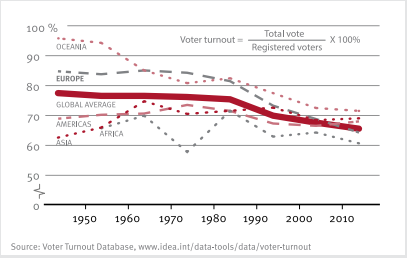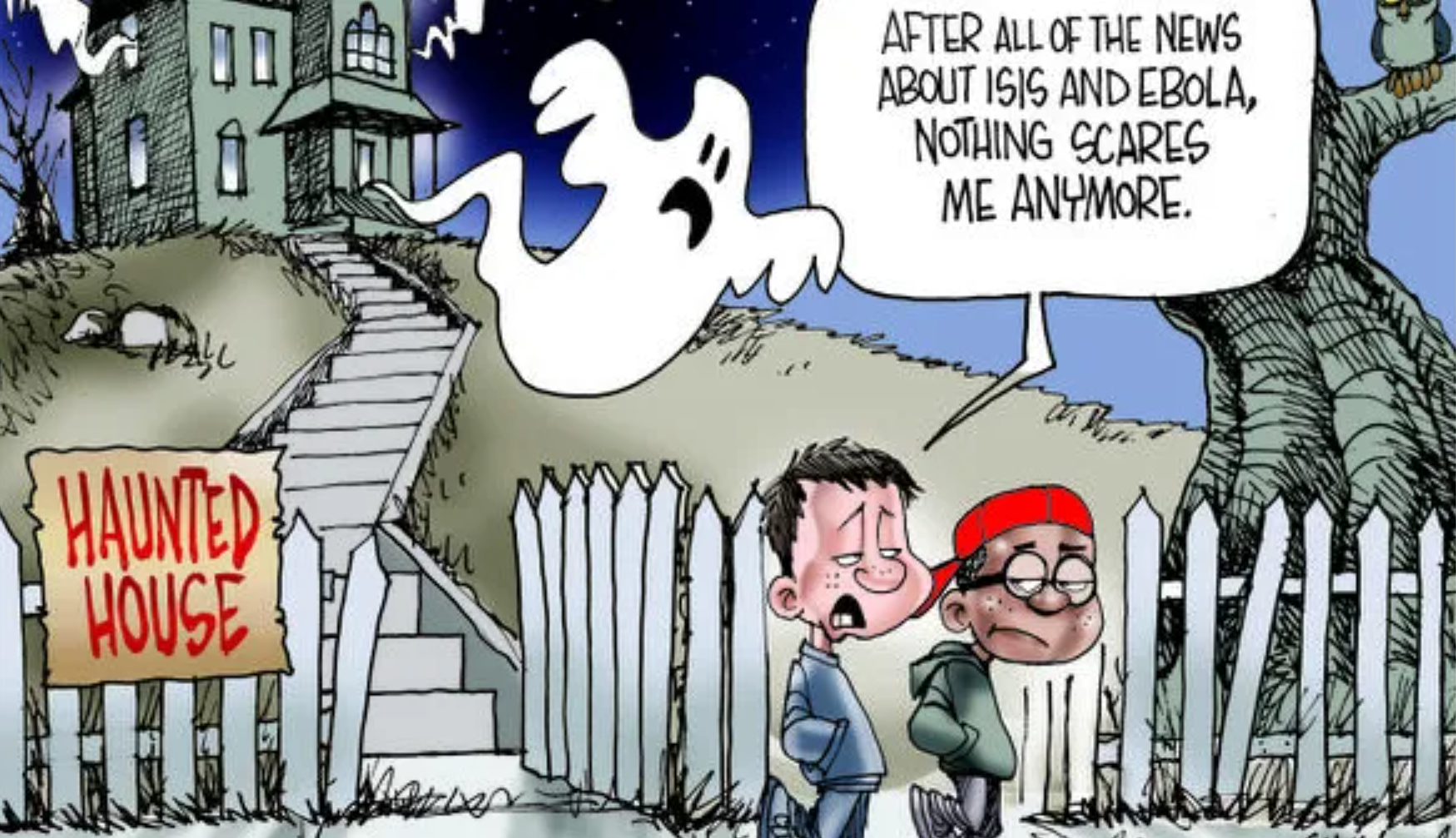On January 28, 2025, the Bulletin of Atomic Scientists set the Doomsday Clock forward one second toward midnight, bringing the world 89 seconds to nuclear apocalypse. The idea of the apocalypse is nothing new, whether or not one has the misfortune of regular media notifications. In December 2012, half the world was convinced that the end of the Mayan calendar meant a fiery armageddon. Twelve years before that, Baby Boomers believed that all their banked money would disappear with the Y2K bug.
These ideas get popular for a reason — fear is one of humanity’s greatest motivators, driven by a will to survive. The media spreads these ideas because they become popular, yet they also become popular precisely because the media spreads them, leading to a dangerous cycle of misinformation and alarmism. Threats — as we more commonly see them across global politics — become the only thing lay news readers hear about because dangers are far more likely to be both internalized and horizontally popularized. Media availability of global threats has created a simplified version of the present moment that proliferates a sense of nihilism and apathy among the public, driving down the public’s drive to engage with them.
Alarmism in the Media
On that note, the last remaining nuclear arms control treaty between the US and Russia is expiring in February of 2026. That’s especially comforting considering Russia is threatening the Baltic states, waging a war of attrition in Ukraine, and may be swinging focus towards Western European states next. Israel is also ramping up military campaigns against basically all its neighbors and has been granted support from the US to ethnically cleanse Gaza. Tensions among China, Taiwan, and all Southeast Asian states laying claim to the South China Sea are only rising. Germany’s Neo-Nazi party came in second place for the new elections after the government essentially collapsed. Donald Trump is expanding the power of the executive and dancing on the grave of the Constitution to the point where democratic backsliding seems inevitable. UNAIDS predicts a 400% uptick in HIV/AIDS deaths in Sub-Saharan Africa after the USAID shutdown. World climate initiatives seem performative at best, and AI may already have the nuclear launch codes anyway, so what’s the point? The Doomsday Clock is now 89 seconds to midnight and the only reason I can sleep at night is because sexist Secretary of Defense Pete Hegseth would never reform US draft law to include women.
Global news journalism right now is somehow simultaneously overwhelming, numbing, and infuriating.
The Cycle of Bad News
Journalists may write this way almost exclusively, or perhaps humans simply gravitate toward the news that looks like this. The National Library of Medicine writes how this human attention bias towards negative information is “an evolutionary advantage.” It is far more helpful, after all, to notice the snake hiding in the corner of the room than that room’s tasteful decor. As the NLM puts it, “it is far more critical for survival to avoid a harmful stimulus than to pursue a potentially helpful one.”
In this way, perhaps global news media isn’t all genocide and global warming; perhaps it’s just that the only pieces of the millions produced daily that become popular enough to show up on the front page are. Here, a cycle is created. In this endlessly competitive world of global journalism — each writer hipchecking another out of the way for the opportunity to show up as the first Google result — journalists write bad news far more often than anything else.
William Randolph Hearst coined the phrase “if it bleeds, it leads” way back in the 1890s, as he noticed this cycle. Bloody headlines are far more likely to turn heads, so journalists produce bloodier headlines as viewers become desensitized. Any social media platform today will showcase how dark the humor of Generation Z — the latest generation to grow up with full, on-demand news coverage — gets.
News Fatigue and Voter Apathy
A study by the European Association for Decision Making and the Society for Judgement and Decision Making showed that during the first six months of the Ukraine-Russia War, public perception of the risk of nuclear armageddon in Italy directly correlated with the amount and emotional content of news coverage. The people read about nuclear war, they believe nuclear war is coming. It creates an availability heuristic, wherein, if all the news the public is exposed to details how genocidal and warmongering and disease-ridden the world is, they will believe those things to be exclusively true.
The barrage of one catastrophe after another becomes tiring very quickly. The Reuters Institute finds that 36% of people surveyed globally avoid the news because it affects their mood. The Pew Research Center finds news fatigue in up to two-thirds of Americans surveyed. News fatigue, or the intentional avoidance of news due to its overwhelming or mood-shifting content, has become widespread, leading to global ambivalence and apathy to catastrophe abroad.
Some level of apathy is necessary when it comes to this level of negative headlines. Spending one’s walk to the grocery store contemplating the plight of those on the other side of the world is not conducive to anything besides stress and burnout when you can’t actually do anything about it.

On the other hand, voter apathy has worsened over the last decade as both global media and democratization as a whole have increased. Turnout globally has decreased by nearly 20% from 1980 to 2024 and the trends look only to be decreasing. The global average for voter turnout was 61% in 2024 and turnout for all continents has largely coalesced in the 60-70% range with Oceania consistently in the lead.
The cause of global voter turnout decline has been debated to death by political scholars, and a great many factors have been studied and declared the final explanation. Apathy has largely been agreed to be one of the first and foremost explanations. It’s Occam’s Razor: People don’t vote because they simply don’t want to. According to the International Institute for Democracy and Electoral Assistance, “lower turnout is usually associated with voter apathy and mistrust of the political process.”
Constant reporting on war, nuclear winter, and global warming is not the way to get droves of people to vote for the leaders who could actually fix it. It’s far more likely to proliferate a widespread sense of defeatism and apathy that halts any semblance of optimism in its path. Election turnout rates in the last decade have been abysmally low because international politics are reported to be nothing more than conflict, genocide, and natural disasters that feel far too large and complex for the average voter to take in stride.
The Good News
But it’s not all bad news. Believe it or not, the world is not actually crumbling beneath our feet. The 2015 Paris Accords are working to decrease global temperature rise predictions despite the lack of US involvement. Latin America leads the world in renewable energy use, with 57.5% of their energy coming from renewable sources. Solar energy and electric vehicles have the potential to reach a significantly larger market share than their nonrenewable counterparts by 2030. For international conflict, scholarly consensus has shown a decline in interstate war and combatant deaths since 1800, even when one factors in the World Wars. Transfers of power in democratic states around the world have been largely peaceful. Weekly COVID-19 infection rates have declined by 99.95% from its peak in December of 2022 to the present day. Maybe this is all a simulation, but it’s not a terrible one.
Frankly, giving the Bulletin of Atomic Scientists any stake in your worldview is ridiculous. For proof, here’s a link to the Doomsday Clock Spotify Playlist, which they put on their website and filled with “midnight” puns. Not even they take themselves seriously.
Featured Image: Gary Varvel






Comments are closed.